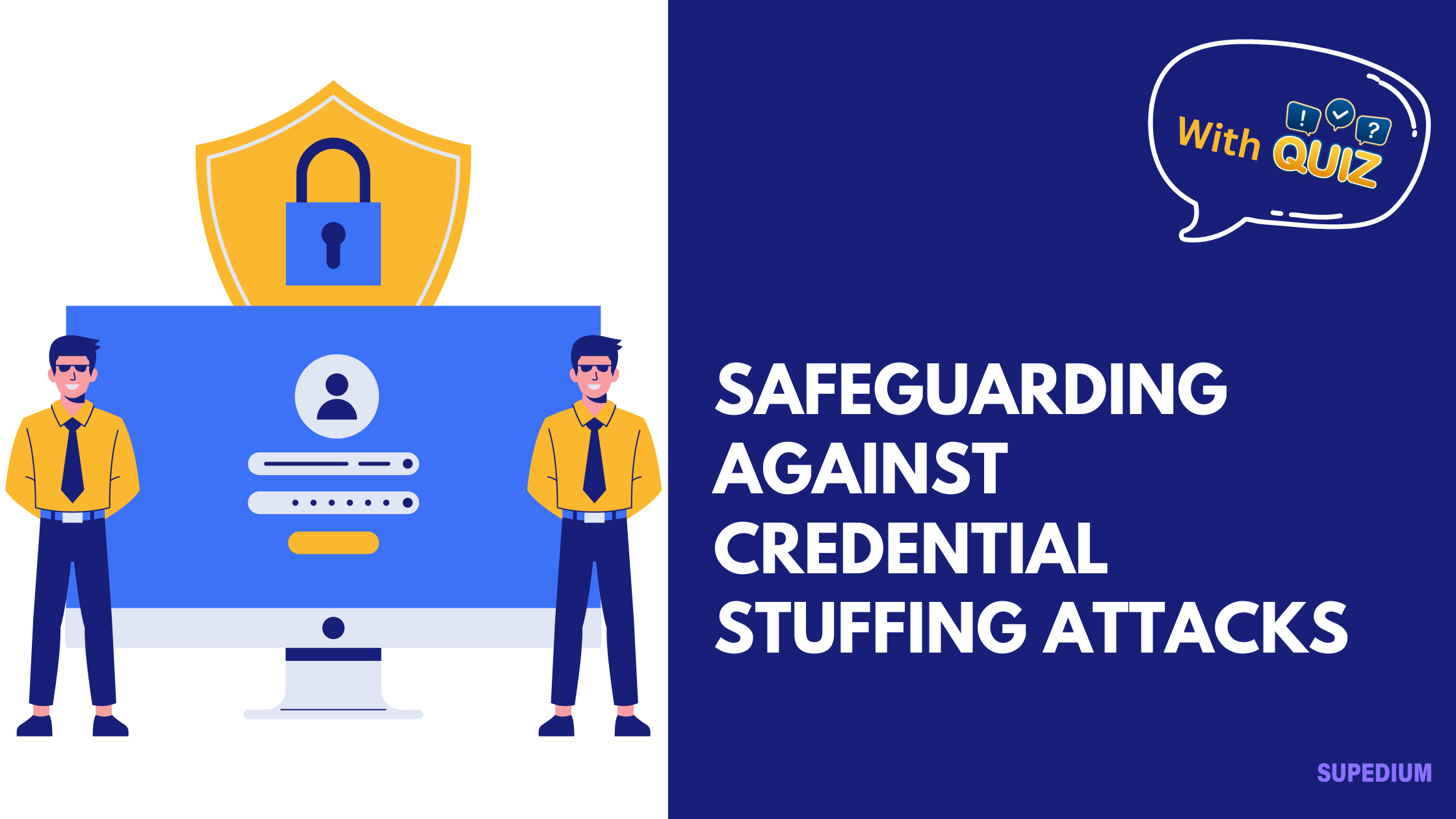Table of Contents
![]()
Credential stuffing attacks have become a prevalent and dangerous threat in the cybersecurity landscape. Understanding how these attacks work and implementing effective measures to protect against them is crucial for both individuals and organizations. This article delves into the intricacies of credential stuffing attacks, identifies vulnerabilities, and outlines comprehensive strategies for safeguarding against such threats.
Understanding Credential Stuffing Attacks
Basics of Credential Stuffing
Credential stuffing is a type of cyberattack where attackers use automated tools to attempt login with stolen username and password combinations. These credentials are often obtained from previous data breaches, where passwords from one compromised service are used to gain unauthorized access to other services. This attack exploits the common human tendency to reuse passwords across multiple sites and services.
Common Techniques Used by Attackers
Credential stuffing attacks rely heavily on automation. Attackers deploy bots that can perform thousands or even millions of login attempts in a short period. These bots use lists of stolen credentials obtained from data breaches to systematically try and gain access. Attackers may also use proxy servers to distribute the attack across multiple IP addresses, making detection more challenging.
Examples and Case Studies
One notable example is the 2019 attack on the online retail sector, where attackers used credential stuffing to access customer accounts and make unauthorized purchases. This incident highlighted the vulnerability of e-commerce platforms and the potential financial losses associated with such attacks. Case studies like these underscore the importance of implementing robust security measures to prevent similar breaches.
Identifying Vulnerabilities
Factors Contributing to Credential Stuffing Vulnerabilities
Several factors contribute to the effectiveness of credential stuffing attacks:
- Weak or Reused Passwords: Many users employ the same password across multiple sites, making it easier for attackers to exploit compromised credentials.
- Lack of Multi-Factor Authentication (MFA): Without MFA, access control is solely dependent on the password, which can be easily bypassed if compromised.
- Insufficient Monitoring and Response: Organizations that do not actively monitor login attempts or lack an incident response plan are more susceptible to successful attacks.
Tools and Methods for Detection
Effective detection of credential stuffing attacks involves using advanced tools and techniques:
- Security Information and Event Management (SIEM) Systems: SIEM systems collect and analyze security data from various sources, helping identify suspicious login patterns.
- Behavioral Analytics: This involves monitoring user behavior for anomalies, such as a sudden spike in login attempts or login attempts from unusual locations.
Implementing Protective Measures
Password Management
One of the most effective ways to combat credential stuffing is to enforce strong password policies. Passwords should be complex, unique, and changed regularly. Organizations can use password managers to encourage users to generate and store strong, unique passwords.
Multi-Factor Authentication (MFA)
Implementing MFA adds an additional layer of security. MFA requires users to provide two or more verification factors to gain access, such as a combination of something they know (password), something they have (a mobile device), or something they are (biometric verification). MFA significantly reduces the risk of unauthorized access even if credentials are compromised.
Rate Limiting and Throttling
To mitigate the impact of automated login attempts, organizations can implement rate limiting and throttling. Rate limiting restricts the number of login attempts from a single IP address within a given time frame, while throttling slows down the rate of attempts, making it more difficult for attackers to succeed.
- CAPTCHAs: Deploying CAPTCHAs during login can help distinguish between human users and automated bots. CAPTCHAs present challenges that are easy for humans to solve but difficult for bots.
Monitoring and Response
Real-time monitoring of login attempts is crucial for detecting and responding to credential stuffing attacks. Setting up alerts for unusual login activity and having a well-defined incident response plan can help organizations quickly address and mitigate the effects of an attack.
Enhancing Security Measures
Security Best Practices
Maintaining security hygiene is fundamental in protecting against credential stuffing attacks:
- Regular Updates and Patching: Ensure that all software, including security systems, is up-to-date with the latest patches and updates.
- Secure Development Practices: Adopt secure coding practices to reduce vulnerabilities in applications and systems.
User Education and Awareness
Educating users about the risks of credential stuffing and promoting best practices for password management is essential. Training sessions can help users recognize phishing attempts and other social engineering attacks that may lead to credential theft.
Utilizing Advanced Security Technologies
Leveraging advanced security technologies can provide additional protection:
- Threat Intelligence Tools: These tools gather and analyze data on emerging threats, helping organizations anticipate and prepare for potential attacks.
- Machine Learning and AI: Implementing machine learning algorithms can enhance predictive threat modeling, allowing for more proactive security measures.
Case Studies and Lessons Learned
Analysis of Successful Defenses
Some organizations have effectively mitigated credential stuffing attacks by implementing comprehensive security measures. For example, a major financial institution employed advanced behavioral analytics and real-time monitoring to detect and block automated login attempts, significantly reducing the impact of such attacks.
Lessons from Failed Defenses
Examining cases where defenses failed provides valuable insights. In some instances, a lack of MFA and weak password policies led to successful attacks. These failures highlight the importance of a multi-layered security approach and the need for continuous improvement.
Best Practices Derived from Case Studies
Best practices include implementing robust password policies, employing MFA, and continuously monitoring and updating security measures. Learning from both successes and failures helps organizations refine their strategies and enhance their defenses against credential stuffing.
Future Trends and Considerations
Emerging Threats and Technologies
As cyber threats evolve, so do the tactics used in credential stuffing attacks. Future trends may include more sophisticated automation tools and techniques. Staying informed about emerging threats and advancements in security technologies is essential for maintaining effective defenses.
Ongoing Research and Development
Research in cybersecurity continues to advance, with ongoing efforts to develop new techniques and technologies to combat credential stuffing and other cyber threats. Keeping abreast of these developments can help organizations stay ahead of potential attacks.
Conclusion
Credential stuffing attacks pose a significant threat to both individuals and organizations. By understanding how these attacks work and implementing comprehensive security measures, it is possible to significantly reduce the risk of unauthorized access and protect sensitive information. Emphasizing strong password policies, multi-factor authentication, real-time monitoring, and user education are key components in safeguarding against credential stuffing attacks.






Be the first to comment